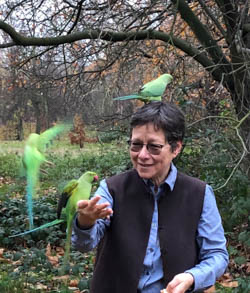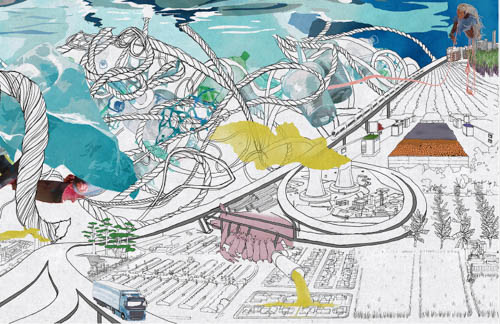The London-based magazine ArtReview recently wrapped up 2020 with the release of their annual Power 100 ranking list celebrating top influencers in the contemporary art world. Feral Atlas: The More Than Human Anthropocene, a project curated by UC Santa Cruz anthropology professor Anna Tsing, was recognized as number 15 on that list.
The Power 100 has been one of the most prestigious and widely recognized rankings in the international art community for almost 20 years. ArtReview said this year’s rankings included “a greater emphasis on the circulation of ideas and values.” Feral Atlas was recognized for its impact on “global issues of political and climate justice,” along with its creative approach to these topics, which ArtReview described as “playful, political and poetic.”
Feral Atlas combines rigorous research from the natural and social sciences with compelling artwork and testimonials to form an interactive online experience of the Anthropocene, a geologic epoch defined by human disruption of natural systems. More than 100 contributors supported the development of Feral Atlas, and UCSC professor Anna Tsing managed and edited the submissions, in collaboration with environmental anthropologist Alder Keleman Saxena, visual anthropologist Jennifer Deger, and architect and designer Feifei Zhou.
“I’m delighted to see this project get recognition,” Tsing said. “The goal of Feral Atlas is to create a way to understand human-caused environmental catastrophe from across many disciplinary perspectives and diverse regional and ethnic perspectives. You can’t really understand a world condition without working from many kinds of observations.”
Tsing said she hopes the project’s interdisciplinary nature will help thought leaders imagine new possibilities for working together on complex issues related to environmental change. Organizing the almost 80 contributed scientific field reports—along with essays, art, and video poems—was quite a task, but Tsing and her collaborators keyed in on important themes that offer insight into the Anthropocene.
First, they identified “detonators,” or social forces like colonialism and capitalism that “change in a big way what can happen afterwards.” Feral Atlas is also organized around “tippers,” or infrastructure processes like the burning of fossil fuels that “shift ecologies past tipping points.” And the project closely examines “feral qualities,” or interactions like the introduction of invasive species that demonstrate “humans and nonhumans creating problems together.”
Any of these lenses can be used to explore Feral Atlas. Online viewers can also navigate via an alphabetical topic index and “reading room” of key content. There are curriculum recommendations, too, for those interested in using the project as a teaching tool. Ultimately, Tsing hopes Feral Atlas will help people understand the origins of environmental problems in a way that allows society to learn from past mistakes.
“I’d like people to notice the world around them in a new way,” she said. “I’ve always been interested in how some of the phenomena that are rarely noticed are absolutely essential to the constitution of the world as we know it. We’ve blinded ourselves to look in just one direction, forward, because we thought that was progress. But in that process of not noticing, we’ve started eroding some of the basic conditions for living together on earth.”




